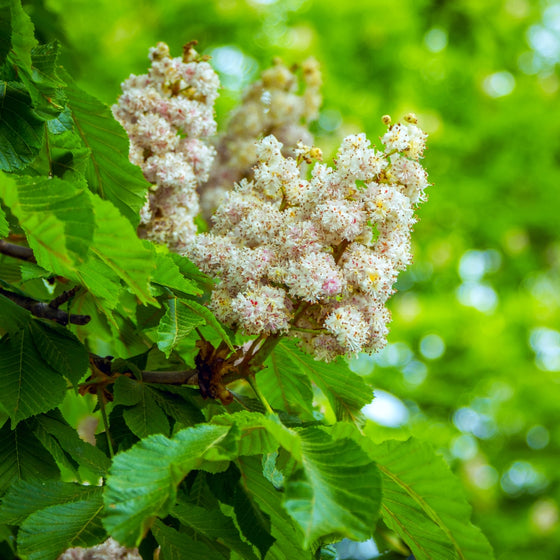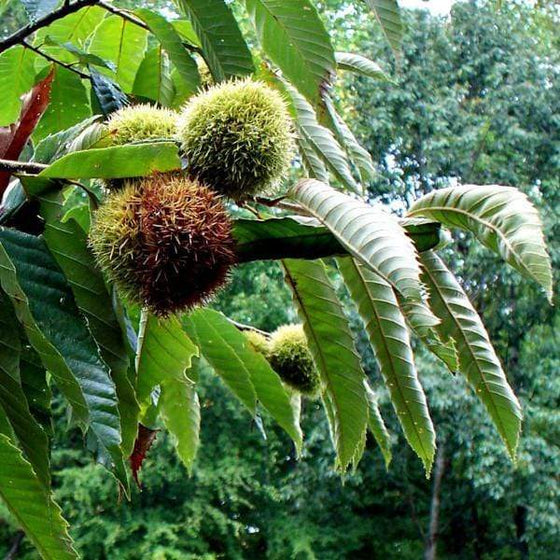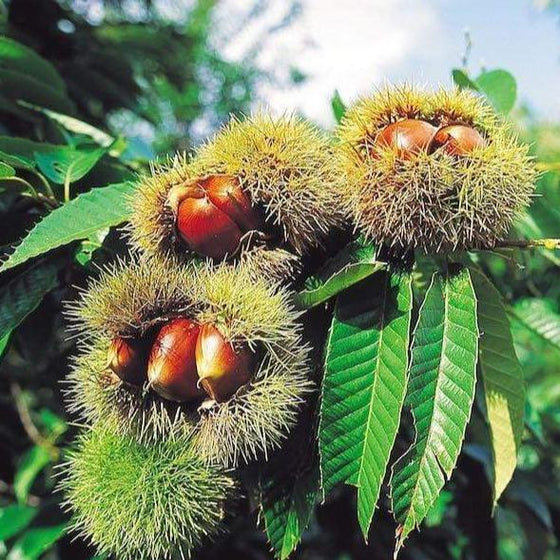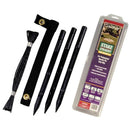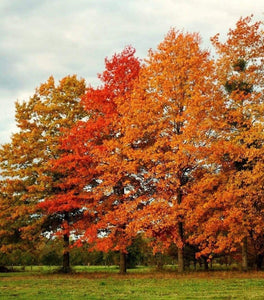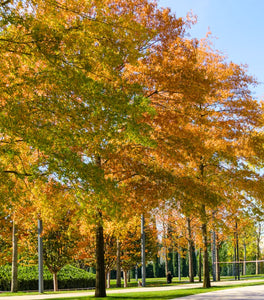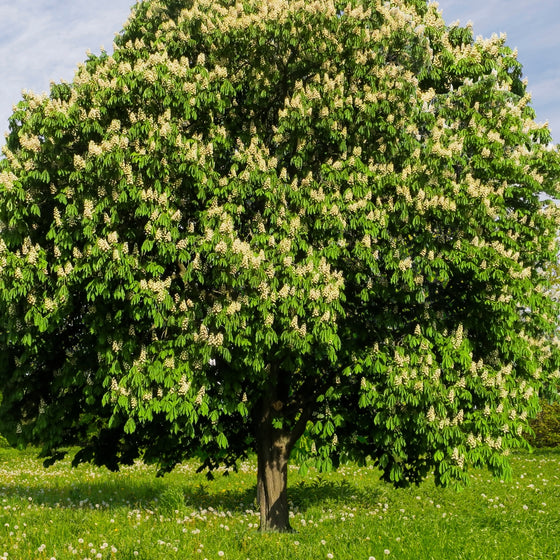
Images Depict Mature Plants
Chinese Chestnut Trees for Sale Online
The blight-resistant Chinese chestnut or Castanea mollissima is becoming more popular each and everyday. These interesting nuts have become famous from often roasted for holiday eating. But its more than just for eating.
The Chinese Chestnut tree has a rounded shape tree with large leaves from urban yellow to light green. These trees are a well known plant that should be planted in pairs or in groups to safeguard pollination. A warm or humid climate is a perfect place for Chinese Chestnut to grow at a maximum rate.
This dense tree provides well in humid weather and is cold hardy as well. This fast growing tree makes for amazing landscape borders and focal points. Line paths with these trees to make a unique statement!
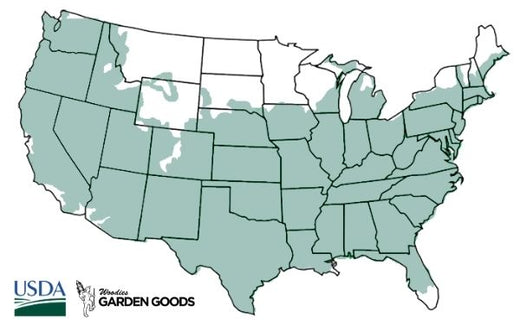
| Hardiness Zone: | 6-9 |
|---|---|
| Mature Height: | 40 to 60 feet |
| Mature Width: | 40 to 60 feet |
| Classification: | Broad leaved deciduous tree |
| Sunlight: | Full sun |
| Habit: | Upright, rounded shape canopy |
| Foliage: | Green to exotic yellow |
| Flower Color: | Inconspicuous |
| Pruning Season: | No pruning needed |
| Soil Condition: | Any well drained soil |
| Water Requirements: | Water well until established |
| Uses: | Tolerates moist soil and full sun. Full sun brings out the best fall color. Will adapt to drier sites. |
How to Care for Chinese Chestnut Tree
For the best results follow these guidelines.
STEP 1: PLANTING
We suggest when planting your newly purchased Chinese Chestnut Tree that you dig a hole twice as wide as the root system but not deeper. Depending on the quality of your existing soil, you may need to add a locally sourced compost or topsoil to the back-fill soil. We do not recommend using straight topsoil or compost as a back-fill soil because more times than not these products will retain entirely to much moisture and will cause the root system to rot. Adding compost or topsoil will help the young feeder roots of Chestnut Tree to spread through the loose, nutrient rich soil, much easier than if you used solely the existing soil which more times than not will be hard and compacted. The most common cause of plant death after transplanting is planting the new plant to deep. That is why we do not recommend planting in a hole any deeper than the soil line of the plant in the pot. A good rule is that you should still be able to see the soil the plant was grown in after back-filling the hole.
STEP 2: FERTILIZE
Trees such as Chinese Chestnut Tree grow best if they are fertilized lightly in the spring once frost has passed with a well-balanced, extended-release, fertilizer such as Espoma Tree-tone. Fertilize Chestnut Trees again 6 to 8 weeks later to encourage denser foliage or faster growth of young trees. Either chemical fertilizers or organic matter can be used successfully with Chinese Chestnut Trees. Since an organic method of applying manure and/or compost around the roots, produces excellent results and also improves the condition of the soil, this would be an excellent first line of attack. Organic additions to the soil can also be combined with a shot of chemical fertilizer for maximum effect.
STEP 3: WATER
After back filling and lightly compacting the 50/50 mix of existing soil and compost give the Chinese Chestnut Tree a good deep watering. This is not to be rushed. Most of the water you put on the plant at first will run away from the plant until the soil is soaked. A general rule of thumb is to count to 5 for every one gallon of pot size. For example a one gallon pot would be watered until you count to 5 a three gallon pot would be 15 and so on. Check the plant daily for the first week or so and then every other day there after. Water using the counting method for the first few weeks.
STEP 4: MULCH
We highly recommend that you mulch your Chinese Chestnut Tree with either a ground hardwood mulch or a ground cypress mulch depending on your local availability. Any type of mulch will do but cypress or hardwood mulch will be of a higher quality and provide better nutrition overall as they breakdown. Mulching helps to keep weeds away which will compete with your new investment for water and nutrients. A 2 to 3 inch layer of mulch is sufficient but remember to take care not to cover any part of the stem of the plant with mulch. Its better to leave a one inch gap of space between the mulch and the stem or trunk of the plant.

